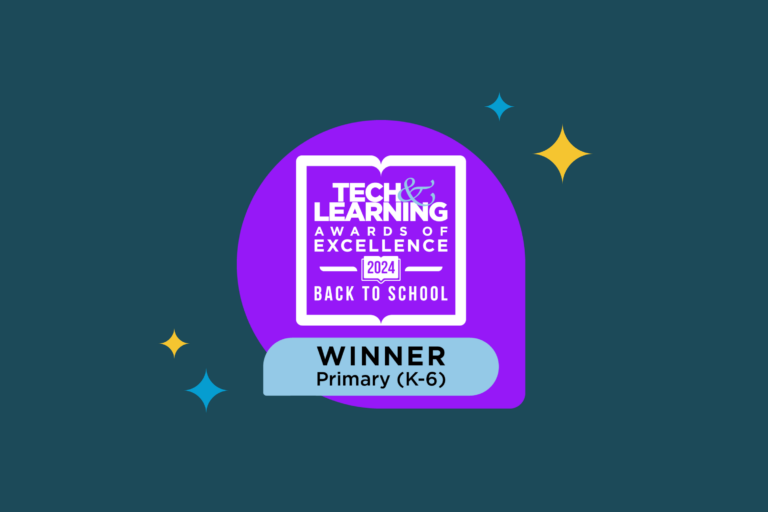Pandemic learning loss report: 1 in 3 parents concerned about child’s education

New data is pulling back the curtain and measuring the impact of the ongoing literacy crisis in our country, which was exacerbated by the COVID-19 pandemic. The latest NAEP assessment found reading scores for both 4th and 8th graders declined in 2022 compared to 2019. As we wait for more academic assessments, we’re asking parents about how COVID-19 impacted their child’s education and discussing possible solutions.
In a new survey, more than 800 parents with children ages four to 11 opened up about the changes they have seen in their children academically and socially since 2020. One in three parents are concerned about the pandemic’s long-term impact on their child’s education.
Top three solutions parents think will help with pandemic learning loss
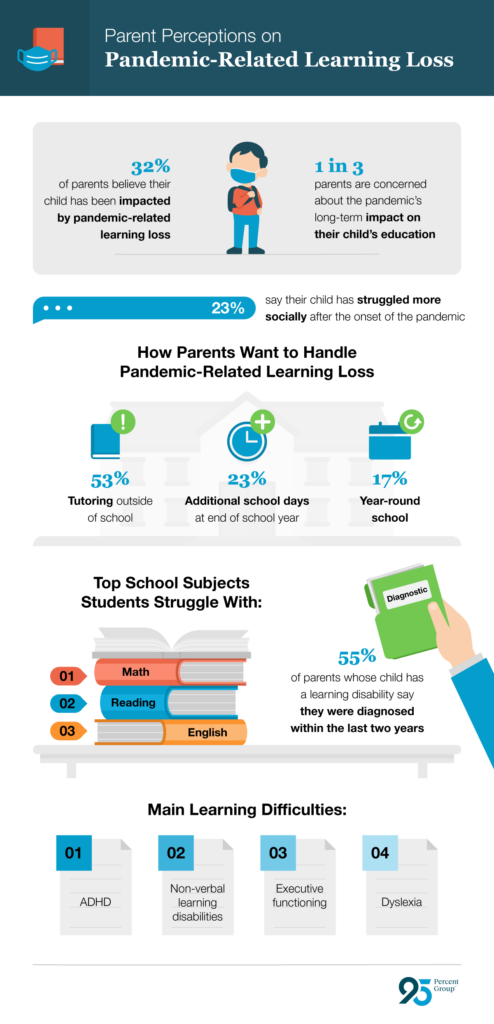
Nearly one in three (32 percent) parents believe their child has been impacted by pandemic learning loss. More than half think students should get additional tutoring outside of school to help with this. Meanwhile, 23 percent feel adding additional school days to the end of the year would benefit children, and 17 percent would prefer year-round school to address the issue.
One 33-year-old parent based in Alabama shared she actually pulled her twins out of the classroom to homeschool them until they could get caught up with reading.
“The way school went with COVID got my twins so far behind,” explained the mother. “They plan on going back to public school [in 2024].”
In addition to the challenges remote learning introduced, learning disabilities are another factor making matters more difficult for families. Nearly one in six (14 percent) parents say their child has a learning disability, and survey data shows half of those students were diagnosed in 2022 or 2023. The top learning difficulties children have are ADHD followed by non-verbal learning disabilities, executive functioning, and dyslexia.
These survey statistics reflect national data. According to the National Center for Education Statistics, 15% of public school students received special education or related services.
Pandemic learning loss by state: reading score impact
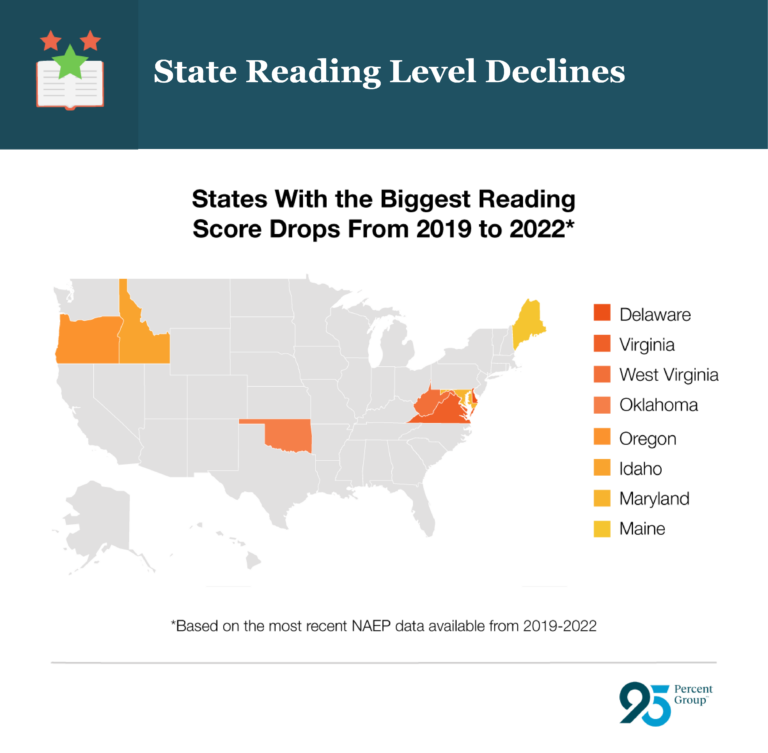
Pandemic learning loss by state is apparent when examining recent assessment levels. In the wake of the COVID-19 pandemic, reading scores dropped an average of three points across the U.S. according to the Nation’s Report Card. From 2019 to 2022, Delaware and Virginia saw the biggest reading score drop with each state’s assessment score dropping by 10 points. West Virginia, Oklahoma, Oregon, Idaho, Maryland, and Maine weren’t far behind, each dropping eight points. However, the decline in reading scores isn’t only attributed to pandemic learning loss.
“This post-pandemic data reinforces what we know about the extreme challenges faced during that time and how our students (and their teachers) are continuing to recover from that crisis,” said 95 Percent Group Chief Academic Officer Laura Stewart. “However, it’s important to note that we have had an unacceptable number of students not learning to read adequately even before the pandemic. The challenge of all students learning to read has been with us for far too long.”
States with the best and worst reading scores
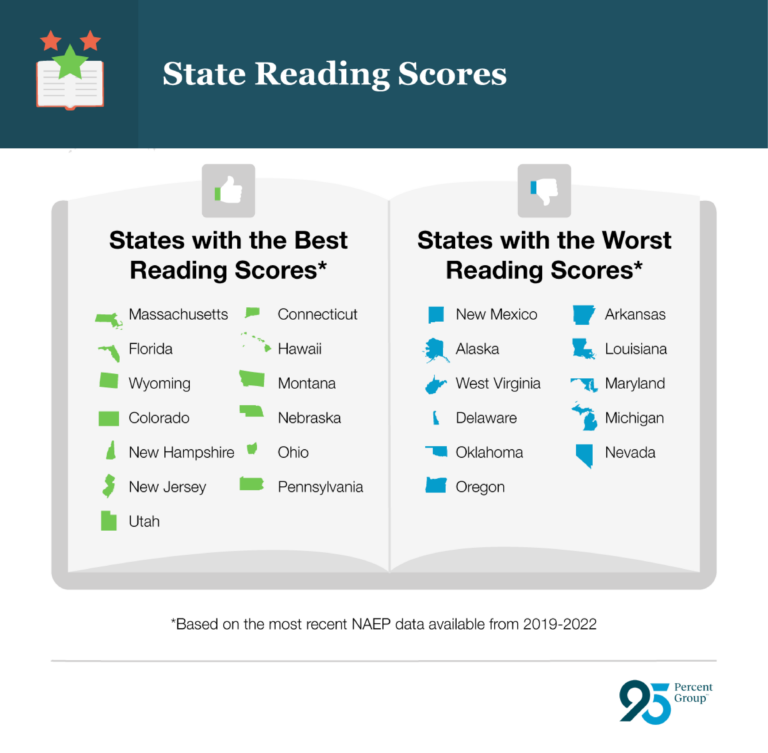
Overall, the state with the best reading scores across the nation is Massachusetts which has a score of 227 followed by Florida and Wyoming which share a score of 225. In third, are Colorado, New Hampshire, and New Jersey with 223.
As for the states with the lowest reading scores, New Mexico tops the list with a score of 202 followed by Alaska, West Virginia, Delaware, and Oklahoma.
Parents share how to encourage children to read
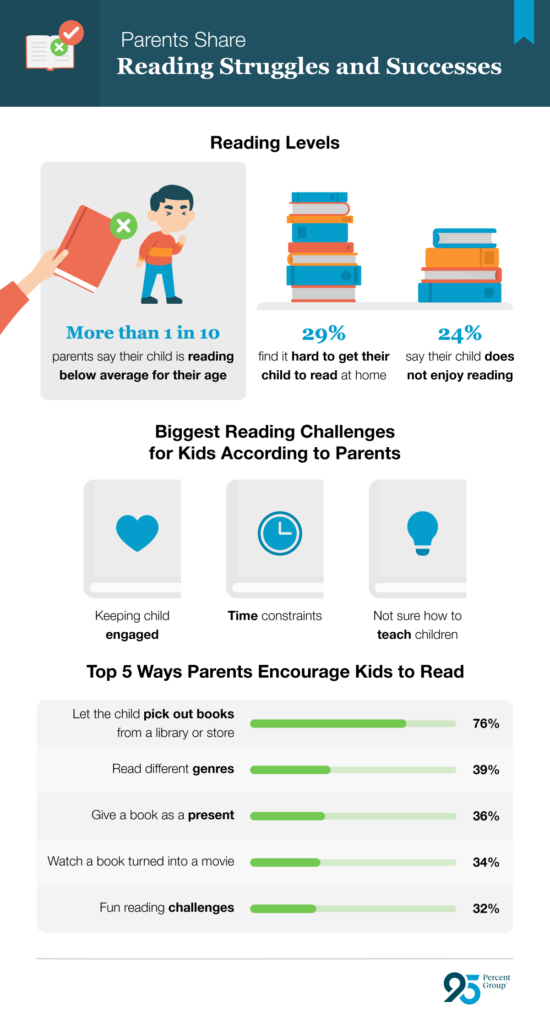
The top two subjects children struggle with the most in school are math and reading, according to parents. Survey statistics show more than one in 10 parents feel their child is reading below average for their age. Nearly one in three find it hard to get their child to read at home, and 24 percent say their child does not enjoy reading.
The top three reading challenges parents face are:
- Keeping their child engaged while reading
- Time constraints
- Uncertainty over the best ways to reinforce a child’s learning in school at home
Some parents have turned to teachers for reading help for their children. Nearly half (46 percent) have asked teachers for advice or resources on how to enhance their child’s reading at home.
“We know high quality teacher preparation, effective instruction, and the right instructional resources are key to this most solvable of issues,” explains Stewart. “Perhaps the pandemic learning data will accelerate our attention to ameliorating this problem once and for all.”
How parents can help with reading at home
There are a few different methods parents use to encourage children how to read. More than three in four parents let their child pick out a book from the library or store. Other tactics include reading different genres, giving a book as a present, watching a book turned into a movie, or completing a fun reading competition like a summer book challenge.
As reading experts, there are science-backed solutions parents can do at home to help their children with their reading journey. For example, some fun ways to help children with their phonemic awareness can include playing rhyming games or tweaking popular songs like “If You’re Happy and You Know It” to encourage children to sound out words.
At the end of the day, the most important place for children to learn to read is in school. There are steps parents can take to help their children, but school-based instruction is where the responsibility to teach children to read truly lies. While learning to read is not a natural skill we develop, it makes a difference when you have the right reading tools, based in high-quality, evidence-based instruction, to learn and grow. That is the key to inspiring the next generation of readers.
Methodology
In November 2023, we surveyed 830 parents of children ages 4-11. 87% had children who are currently in elementary school. Parents ranged in age from 21 to 69 with an average age of 40. 49% were men, 50% women, and 1% would rather not say.
State reading score data was gathered from the National Center for Education Statistics NAEP assessment, known as the Nation’s Report Card. The states with the best and worst reading scores are based on data from 2022, the most recent data available.
For media inquiries, please contact media@digitalthirdcoast.net.
Fair Use
When using this data and research, please attribute by linking to this study and citing 95 Percent Group



